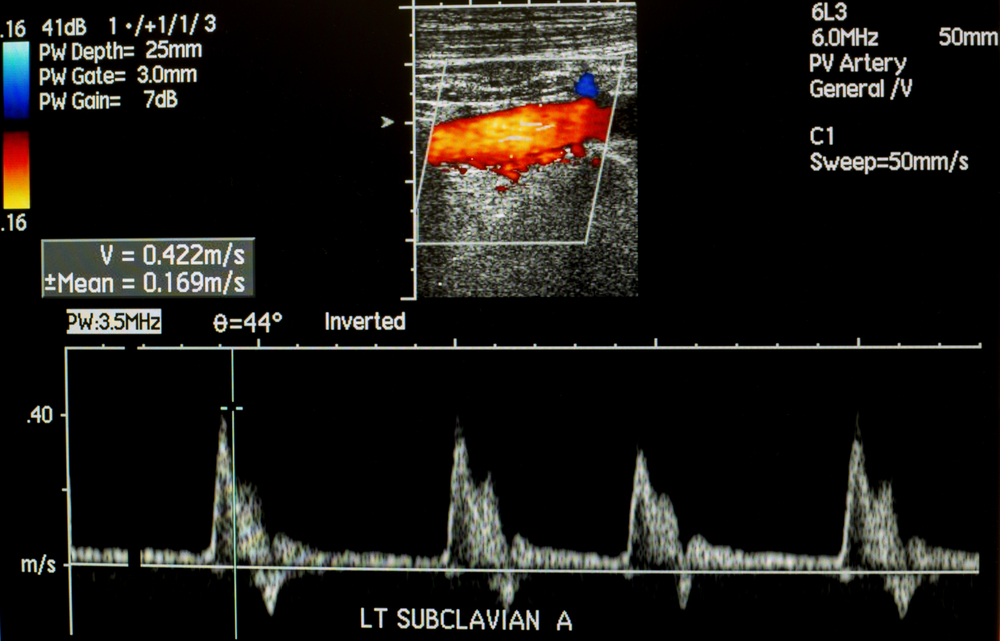Doppler Echocardiography Is as Good as Invasive Method for Predicting PH Outcomes, Study Finds

Non-invasive Doppler echocardiography does as good a job of assessing high blood pressure in lung arteries as the current invasive standard of right heart catheterization, a pulmonary hypertension study suggests.
And doctors can use the results from either method to predict PH patients’ outcomes, researchers said.
The team published their findings in the journal PLOS One. The article is titled “Prognostic relevance of elevated pulmonary arterial pressure assessed non-invasively: Analysis in a large patient cohort with invasive measurements in near temporal proximity.”
Researchers wanted to know if Doppler echocardiography could predict patients’ outcomes as well as catheterization. Similar to an echocardiogram, Doppler echocardiography uses ultrasound waves to record blood flow in the cardiovascular system.
Researchers compared patients who had heart catheterization and patients who had Doppler echocardiography over five days. Their study also included patients’ disease characteristics and the results of their blood tests for up to eight years. Altogether, the team looked at 1,038 patients.
A third of the patients — 308 — either died or survived by having a heart transplant. The breakdown was 237 deaths and 71 transplants.
The analysis showed that both Doppler echocardiography and catheterization provided information about high blood pressure in lung arteries that doctors could use to predict patient outcomes.
Adding information about patients’ heart and kidney function significantly increased the blood pressure tests’ predictive value, researchers said.
Overall, the results showed “that the non-invasive detection of elevated PAP [pulmonary arterial pressure] at rest has prognostic relevance, comparable to RHC [right heart catheterization] measurements,” the researchers wrote. “Furthermore, the addition of functional capacity” and blood biomarker information “delivered incremental prognostic [patient outcome] information,” they wrote.
The team concluded that its analysis showed that “the application of transthoracic DE [Doppler echocardiography] as a first-line diagnostic tool for patients with suspected pulmonary hypertension” matched catheterization in being able to predict patient outcomes.







